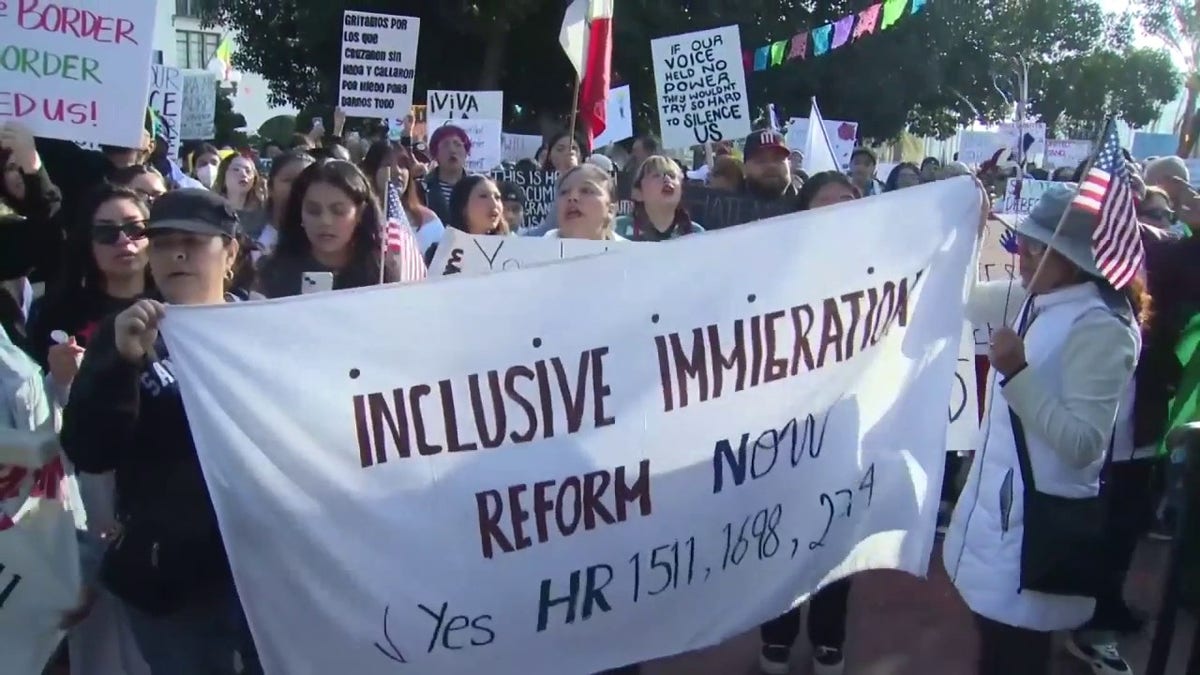The Use of Military Forces in Los Angeles Sparks Debate

About the People Mentioned
Pete Hegseth
Pete Hegseth is an American government official, author, and former television personality. Born on June 6, 1980, he graduated from Princeton University in 2003 and later earned a master's degree in Public Policy from Harvard University's John F. Kennedy School of Government in 2013[1][4]. Hegseth was commissioned as an infantry officer in the Minnesota Army National Guard, serving in Guantanamo Bay, Iraq, and Afghanistan. He received several military awards, including two Bronze Star Medals and the Combat Infantryman Badge[3][4]. After his military service, Hegseth worked with organizations such as Vets for Freedom and Concerned Veterans for America, where he served as executive director and CEO, respectively[1][7]. He became a contributor to Fox News in 2014 and later co-hosted *Fox & Friends Weekend* from 2017 to 2024[1][5]. Hegseth has written several books, including *American Crusade* and *The War on Warriors*, the latter being a New York Times bestseller[3][5]. In November 2024, Hegseth was nominated by President-elect Donald Trump to be the Secretary of Defense. He faced a contentious confirmation process, with allegations of misconduct and financial issues. Despite these challenges, Hegseth was confirmed by the Senate on January 25, 2025, with Vice President JD Vance casting a tie-breaking vote[1][2]. As Secretary of Defense, Hegseth has been involved in several significant events, including ordering budget cuts and firing top military officers to "focus our military on its core mission"[2]. He has also been at the center of controversy regarding the use of the Signal messaging app for sharing sensitive information[2]. In September 2025, Hegseth addressed senior military leaders, emphasizing the need for tighter fitness standards and opposition to certain policies he termed "woke garbage"[1].
About the Organizations Mentioned
Senate Appropriations Committee
The **United States Senate Committee on Appropriations** is the Senate’s largest and one of its most powerful standing committees, responsible for overseeing discretionary federal spending. Established on March 6, 1867, it was created to separate appropriations authority from the Finance Committee, enhancing Congress’s control over government expenditures[2][7]. Its constitutional foundation lies in Article One, Section 9, Clause 7, which mandates that "No money shall be drawn from the Treasury, but in Consequence of Appropriations made by Law," giving this committee critical influence over federal budget implementation[1][2]. The committee is tasked with drafting the 12 annual appropriations bills that fund nearly all federal departments and agencies. These bills collectively determine how the government allocates resources across defense, science, education, health, environment, and other key sectors. The committee operates through 12 subcommittees, each handling specific budget areas such as Defense, Energy-Water, Commerce-Justice-Science, and Labor-HHS-Education, which notably include agencies critical to technology and scientific research like NASA, the National Science Foundation, and the Department of Energy[3][5]. The Appropriations Committee plays a pivotal role in managing government spending by reviewing executive agency budget proposals, setting spending limits (known as 302(b) allocations), and negotiating funding levels with the House counterpart. The chair wields significant power to influence funding priorities, often directing substantial federal resources to their states, a practice sometimes referred to as “pork barrel spending”[2]. Notably, the committee has been a stepping stone for influential Senate Majority Leaders from 2001 to 2021, emphasizing its political significance[2]. Its annual work on appropriation bills shapes the federal budget landscape, directly impacting government operations and the business and technology sectors reliant on federal funding. In summary, the Senate Appropriations Committee is a cornerstone institution in U.S. fiscal governance, balancing constitutional authority with political negotiation to determine the nation
National Guard
## Overview The National Guard is a unique component of the United States Armed Forces, serving as both a state and federal military reserve. It is divided into the Army National Guard and the Air National Guard, each functioning as the primary combat reserve for the U.S. Army and Air Force, respectively[1][5]. Unlike other military reserves, the National Guard can be activated by state governors for domestic emergencies—such as natural disasters, civil unrest, or public health crises—while also being deployable overseas by the president during national emergencies or conflicts[1][2]. This dual role makes it a critical bridge between civilian life and military service, with most members serving part-time while maintaining civilian careers or education[1][7]. ## History The National Guard traces its origins to 1636 in Salem, Massachusetts, making it the oldest military organization in the U.S.[4][6]. Initially formed as local militias for community defense, it evolved into a structured reserve force integral to every major U.S. conflict since the nation’s founding[6]. The modern National Guard was formally established by the Militia Act of 1903, which standardized training and equipment across states and created a federal role for the Guard[4]. ## Key Achievements The National Guard has been pivotal in both domestic and international crises. Domestically, Guard units have responded to hurricanes, wildfires, the COVID-19 pandemic, and civil disturbances, providing essential support to local authorities[2][6]. Internationally, Guard units have deployed to conflicts in Afghanistan, Iraq, and the Balkans, as well as peacekeeping and training missions worldwide[2][5]. The Guard’s State Partnership Program also fosters military cooperation with over 100 nations, enhancing global security partnerships[5]. ## Current Status and Notable Aspects Today, the National Guard comprises approximately 430,000 members across all 50 states, Washington, D.C., and U.S. territories[1][6]. It is overs








